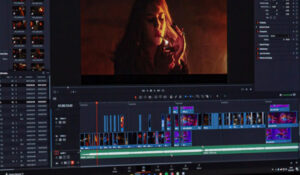A new, upcoming way to decorate your home is that with Islamic wall art frames. Even though Islamic wall art dates to several centuries ago, the use of modern technology and mediums has made it popular once again. And it’s quite easy to find several types of Islamic wall art for sale -from low-cost vinyl stickers referred to as wall decals to canvas paintings or fine art paper prints depicting a Quranic verse.

Apart from enhancing the visuals of your interiors, Islamic wall art serves a more serious mission – it is an expression of one’s belief in the Islamic faith, and can also serve as a constant reminder of the ayat of Allah. For example, a huge wall decal or poster saying ‘Alhamdulillah’ in your dining room would remind you of the blessing of sustenance by Allah. There are various dues from the Quran which, if pasted on your walls, can help children memorize them.
It also helps you in educating people about the message of the Quran. If a visitor to your home doesn’t know how to read Arabic and asks you the meaning of a verse on your wall, you can explain it to him or her. For all you know, it might spark further interest in your visitor regarding the religion.
To overcome the translation issue, many Islamic wall art frames now come with English translations that are displayed adjacent to below the Arabic verse from the Quran. Since the majority of Muslims are non-Arabs, English translations are very useful for them to understand the message. The English text is also displayed in a stylish font. Sometimes, only the English text is printed on the canvas or the decal or poster, without the Arabic text – ushering in a new era in Islamic art. Come to think of it, it is actually a revolutionary trend in Islamic art – moving from Arabic to English.
However, nothing matches the appeal of Arabic calligraphy. The Arabic script’s cursive nature, diacritical marks and vowel symbols make it suitable for calligraphic writing. The Arabic script is an enigma in itself – it is subtle and understated yet imposing and grand. It, therefore, is unsurprising that it adorns many historical monuments.
The introduction of English in Islamic wall art is a positive change though especially it helps fulfill the spiritual purpose of the art – reminding people living in the home as well as visitors of the blessings, Mercy and Grace of Almighty Allah.
As a matter of fact, people now choose verses according to the room they are pasted in. So, the dining room has ‘Alhamdulillah’, which means ‘Praise be to Allah’ while the children’s room has ‘Tawakaltu Al-Allah’, which translates into ‘Put your trust/faith in Allah’. At the doorway, it is generally ‘Haadha min Rabbi Fadhli’, which is Arabic for ‘This is by the Grace of Lord’.
Apart from traditional favorites like ‘Alhamdulillah’, ‘Masha Allah’ and Ayat-al-Kursi, Islamic wall art frames now also include even lesser known verses from the Quran, often on demand by clients.
Clearly, in terms of language and variety of verses, Islamic wall art for sale is seeing some very interesting strides.



